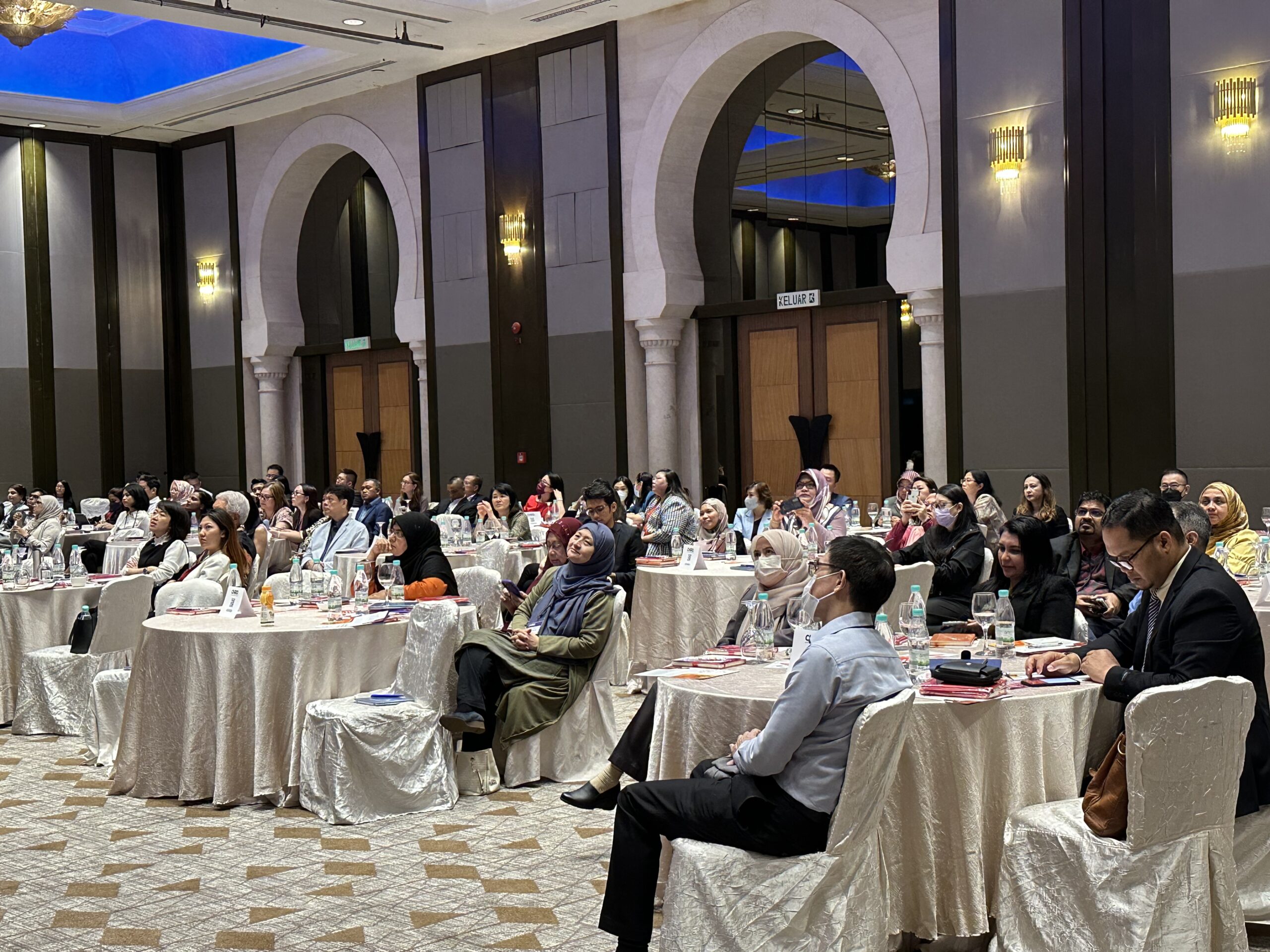Tech transformation: Change leadership in HR is the real problem
- HRM Asia Newsroom

When we talk about the pace of change, we are often referring to technological innovation. What about the pace of business, of the HR function, of people, of the daily problems we try to solve? The reason we in HR and technology wring our hands in despair is not because there are no solutions; it is because we cannot keep up with them, and we need new approaches to change leadership in HR.
In fact, the reason we do not make more progress on transformation initiative is not because we cannot execute technology, it is because we cannot execute change.
We are still solving everyday problems
Attracting the right talent, building the right leaders and maintaining high employee productivity still have the greatest impact on business performance. Not much new there, right? HR already knows this. They also understand those imperatives rely on identifying and selecting the right digital platforms, implementing them well and adopting newer technologies like AI and automation.
But all too often, our transformation initiatives fall short. Even if we deploy solutions on time and under budget, they fail to make the impact HR promises, people expect and the business needs. Mercer’s 2024 Global Talent Trends confirms:
- One in three HR leaders worries about insufficient productivity gains even after leaning into AI, automation and work redesign.
- 94% of executives say they are investing or planning to invest in technologies to improve employee health and wellbeing, but eight in 10 employees still report being at risk of burnout. Same as last year.
- 67% of organisations adopt new technology without transforming the way employees work.
- 42% of HR leaders say implementing or upgrading new HR technologies is the biggest challenge to their operating models.
- Two in three employees say their organisation is not good at communicating how recent technology, including AI and automation, will improve the way they work.
We have the best tech we have ever had at our fingertips, arguably, with general availability for a wide range of use cases. Why are well-intentioned solutions falling short?
Is technology the real struggle?
This irony gets me every time: Technology is the silver bullet we rush to the fastest when we need a solution, and it is the first thing we blame when necessary outcomes are slow or scarce. The fact is, technology is advancing, and it is atmospheric—the HR function simply cannot be effective without it. So, why is HR not more effective with it?
Technology is both simple and complicated. There are a lot of features and capabilities to be configured to design; it must integrate well with everything else in your tech stack; and it is a pet, not a rock, so it needs to be nurtured and cared for to continue to provide continuous, relevant impact. There is governance, ethics, bias to be managed, analytics to be deciphered… But even with all the requirements, demands and expectations we have of digital solutions, there are just as many playbooks, partners and best practices to help us manage technology to suit.
Furthermore, we don’t even need coding skills or software development expertise anymore. Generative AI is changing the enterprise software landscape before our eyes; now, we only need design thinking and access to proper tooling to quickly configure and deliver highly relevant, timely solutions the workforce needs. We have seen recent innovations, for example, that open enterprise application development to everyone in a flexible, no-code, design-friendly way. This is incredible, honestly: If value can be gained through design thinking as much as actual software development, we should be democratising and multiplying innovation gains, no?
Consumer-grade applications and the advancement of generative AI also mean we do not necessarily need to “see” the full interface and inner workings of a solution to derive its value; we can prompt or command a back-end application through an intuitive front end without slogging through clumsy menus, too many screens and pages, irrelevant search results or friction-ful navigation experiences. All of this is great news for technology adoption; perhaps tech can finally get out of its own way in solving everyday problems for people at work. That is assuming lacklustre adoption of technology is the reason we do not see better outcomes. We will get to that.
Change execution is HR’s biggest hurdle
HR needs to think beyond technology, even great new technology, to drive success.
The pace of technological development is fast and getting faster, but technology alone does not produce impact. Its intentional design and strategic deployment product impact, usually by enabling new capabilities. And ultimately, value is delivered through change execution.
Remember, technology is not the same as transformation. Transformation changes the way work gets done; changing technology without achieving transformation is to simply swap out the tool we use to do the same work the same way we always have.
That is why we have long educated HR and transformation leaders on the “Digital Equation for Success”:
Mindset
This is the only place to start for true, sustained transformation. Enterprises need to be digital, not just “do digital”. They need to understand how to deploy capabilities for humans, not roll out tech for “users”. This requires data, design and deployment skills, and it requires a clear vision and measures of success.
People
Design solutions by creating for the empty chair. Listening to the voice of the customer or employee helps prioritise what problems to solve and when. Employee feedback should co-create and validate solutions, and experiences should be highly personalised to meet unique audience needs.
Process
People work in journeys, not processes. Well-designed journeys are personalised, frictionless and happen in the flow of work. They deliver the right experience to the right person, at the right time and in the right channel. Journeys also collect an incredible amount of data about how people work best so you can keep optimising outcomes.
Technology
When you have done the preceding work, you have earned the right to consider appropriate technology solutions to fuel the desired experience and necessary outcomes within your digital experience architecture. If you jumped straight to this step without an aligned vision, a deep understanding of who stands to gain and a design thinking approach to meeting them where they are, your ultimate technology choice matters little.
If we could lay a tablecloth under all of this, it would be this: Design for change. Technology does not change how we work; that is a product of transformation, but only if we shift our mindset, learn to think digital and embrace change as the strategy, not the enemy.
Change leadership in HR: The strategy, not the enemy
We hear a lot about change in its many forms: change readiness, change management, change enablement, even changefulness as a way of operating. Without splitting hairs, let’s just say none of it matters unless you execute. And maybe that has been our problem: We think of change as something that happens to us, not as a strategic tool we can wield in our own favour.
If we are going to get better at fully executing change, we may need to insource R&D again. Perhaps we over-rely on software vendors to ideate, build, test and measure success against their product. HR ultimately owns its technology choices, so the function also needs to own the strategy, the trial and error, and the investment costs to get solutions to GA and value. Putting more emphasis upfront on why and how a solution is to be leveraged, its value measured and how it could be continuously improved for maximum impact will help us avoid accepting technology out of the box, turning on factory settings and walking away after go-live.
We should also rethink the narrative around change readiness. Sure, it is a way to sequence and prioritise work based on capacity, resources, commitment and cultural alignment around desired changes. But while 77% of organisations say they are happy with their level of change readiness, 64% of them say they struggle to execute.
Despite our best efforts to prepare for change, we fall short on execution. We are not actually mapping capabilities to put the right people in the right roles at the right time. We fail to deliver a truly superior employee experience. We continually struggle to engage and retain high-performing talent. We do not anticipate skills shift and the resulting learning shifts those require. Our digital transformation programmes are not considered truly successful. And despite C-suite pressure to deliver on the promises of AI and automation, HR has yet to show productivity gains from these efforts.
Change readiness is a critical success ingredient, but the Achilles heel of HR is its own shortcomings in executing change. Just a guess: Maybe selling the idea is the missing ingredient.
Good HR is good marketing
HR is the strategy partner to the business, but that involves more than articulating an aligned vision, execution strategy and roadmap. It is about creating excitement and acceptance of the changes required to truly transform. Value creation requires adopting change, not technology. Adopting change boils down to leadership, culture, enabling tools and technology and an employee value proposition that is positioned as a two-way value street.
Value creation is everyone’s business, but we need to define it for everyone. Here is an example: AI will force us to change the conversation around human value and productivity. Perhaps measuring workforce productivity should not be about measuring pre-defined outputs but about how productive people feel. Or how well they team with colleagues and/or machines to drive better results. Changing the human value narrative at work would never be accomplished by putting AI in place as a “productivity solution.” This example is a mindset and cultural change first, supported by technology but largely driven by selling a new idea and providing proof to support it.
READ MORE: How leaders are ‘getting played’ by the dark side of HR tech
Good HR is good marketing, and this is the marketing opportunity of our lifetimes. HR leaders will only get better at executing change if they change to recognise these narratives:
- Technology is not the experience itself; it is fuel for the desired experience at scale.
- In fact, learning to be digital is to show empathy at scale.
- Change is the strategy, not the enemy.
- AI is not an outcome; it is a tool to help you achieve the outcomes you need.
- The point of transformation is not to lift and shift the technology we use; it is to change the way work gets done.
- Change is cultural; it is a foundational belief system that things can be better than they are.
You get the point: HR is falling short on change execution because it is losing the plot. The point of technology-supported transformation is not the technology; it is a transformed way of working for everyone’s gain. If we are going to deliver transformation, we need to drive cultural change. That is a storytelling opportunity, a selling opportunity and a moment for inspired vision and leadership.
It is also a critical time to build trust. When the organisation is growing or transforming (and we should always be growing and transforming), employees, investors and clients all need to trust the plan. It is ok if the plan change out of necessity or to optimise results, but people will follow if they know generally where you intend to lead them, how they should participate and what value they can hope to gain.
HR, get selling
We have never had better HR technology at our fingertips than we have right now, and that includes AI and automation. The vast field of HR technology can do incredible things for businesses and people. We can solve age-old problems with fresh, innovative approaches. But do not rush to the tech; software success depends on a digital mindset, design thinking and change execution. Not management, not enablement, nothing passive like that—change execution.
People need to be excited to change the way work gets done, and they need to want to be part of the solution. As HR professionals, you are necessary storytellers, value marketers, human nurturers, experience designers, problem solvers and part of the workforce yourself. Use those experiences to help guide your decision-making, get leadership buy-in and help your organisation get on board. That is your true flex.
About the author: Jess von Bank is a 20-year industry veteran and impassioned evangelist of the modern experience of work and future of talent. She also runs the Now of Work, Mercer’s global community for HR and work tech. This article was first published on Human Resource Executive.
For more news and analysis on the latest HR and workforce trends in Asia, subscribe to HRM Asia and be part of the region’s largest HR community!






